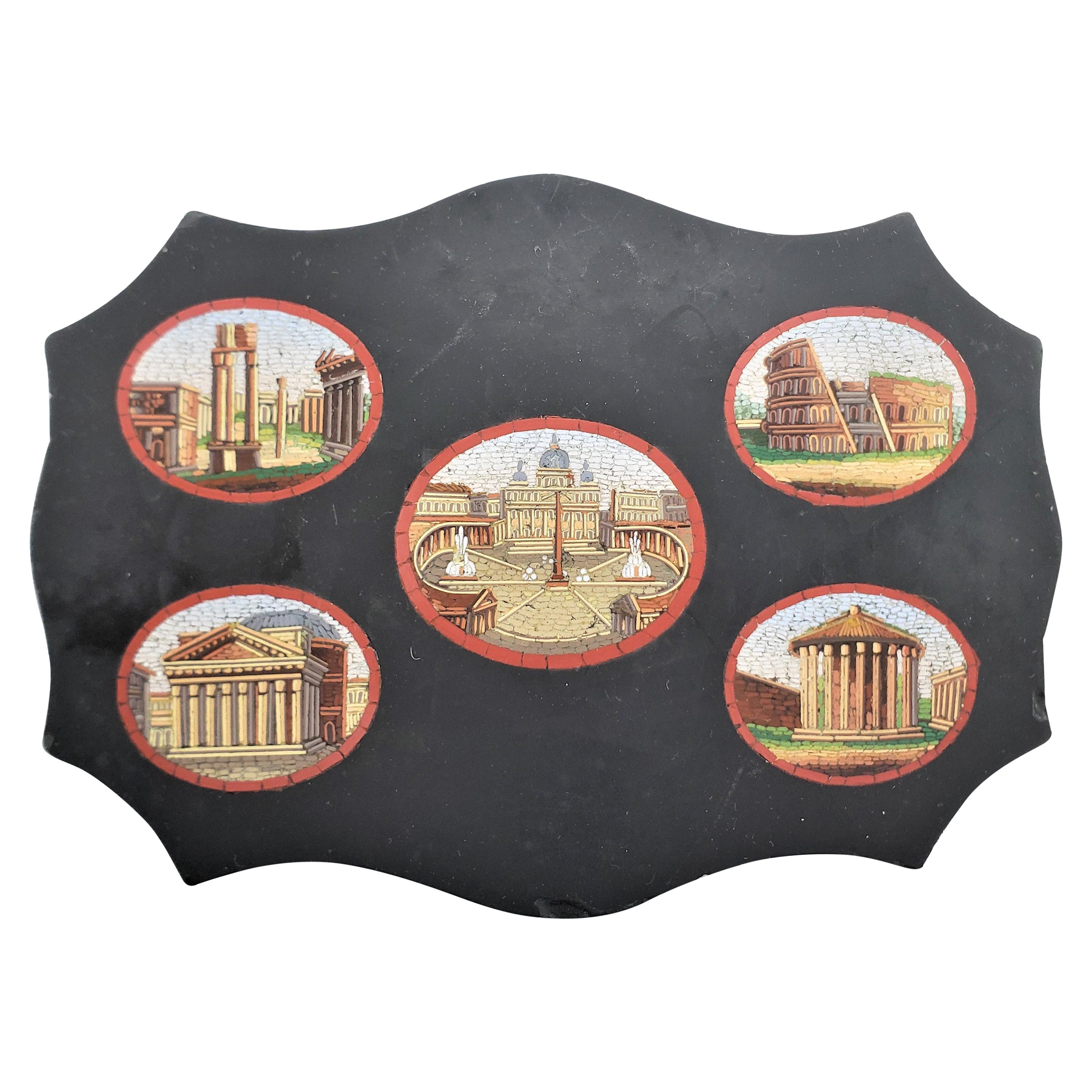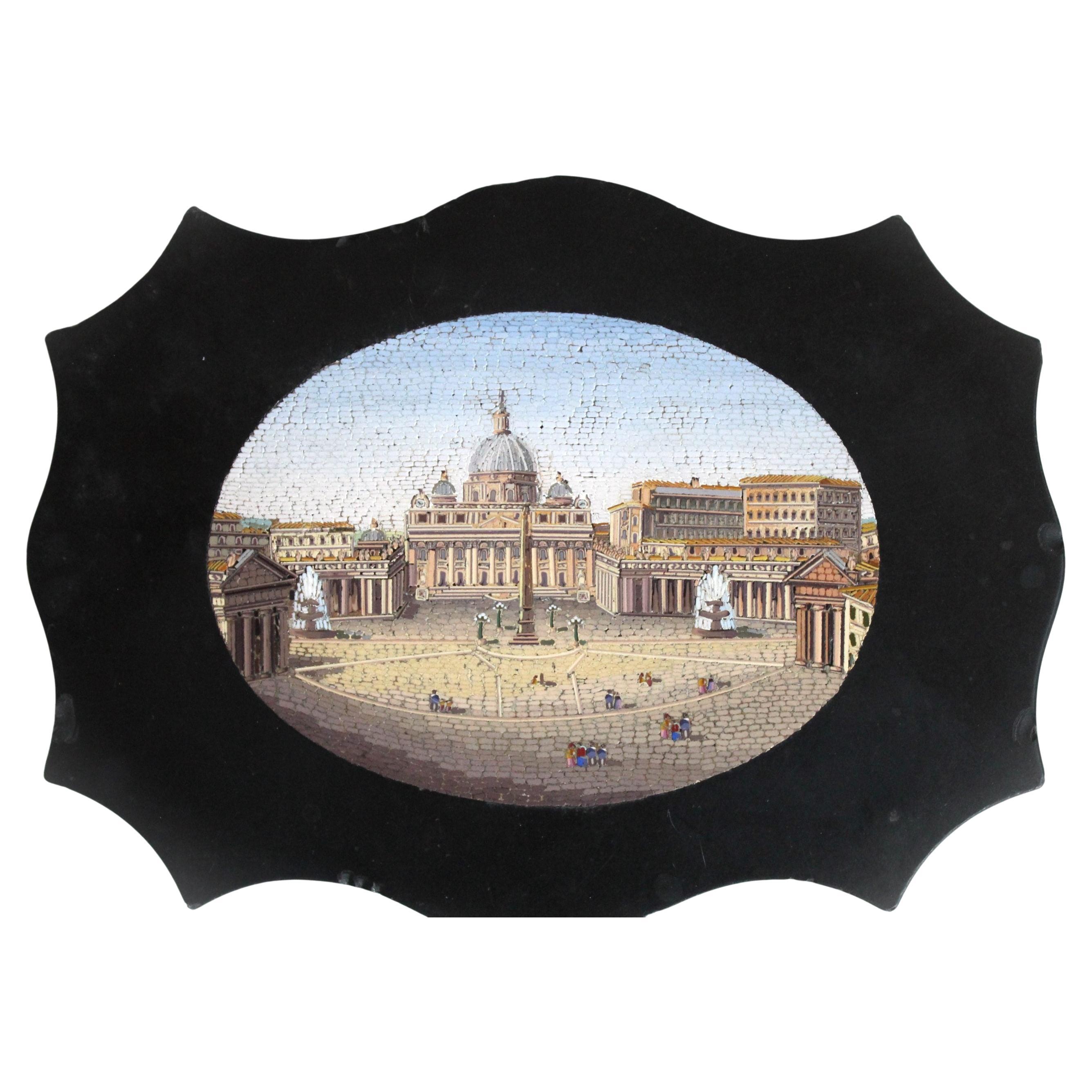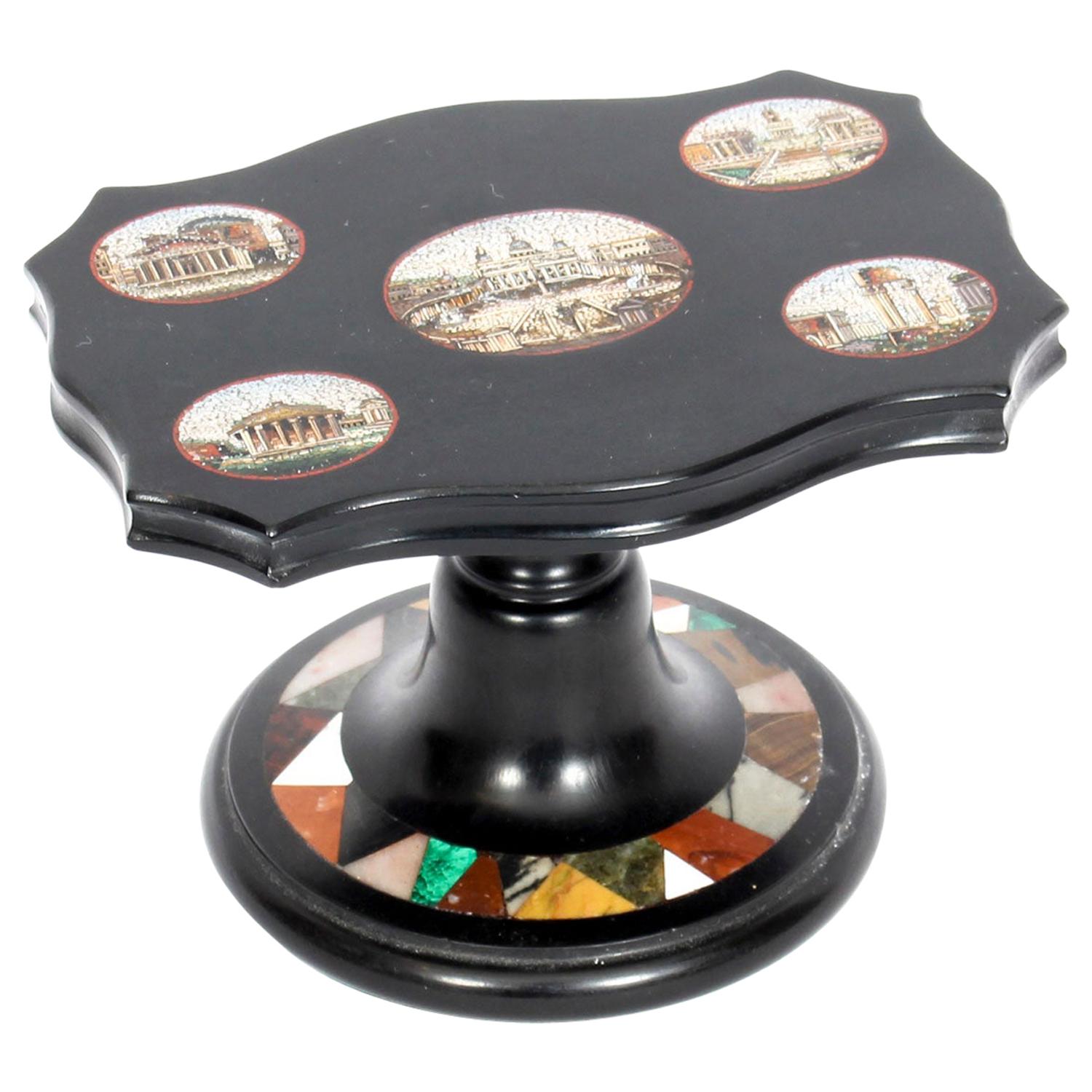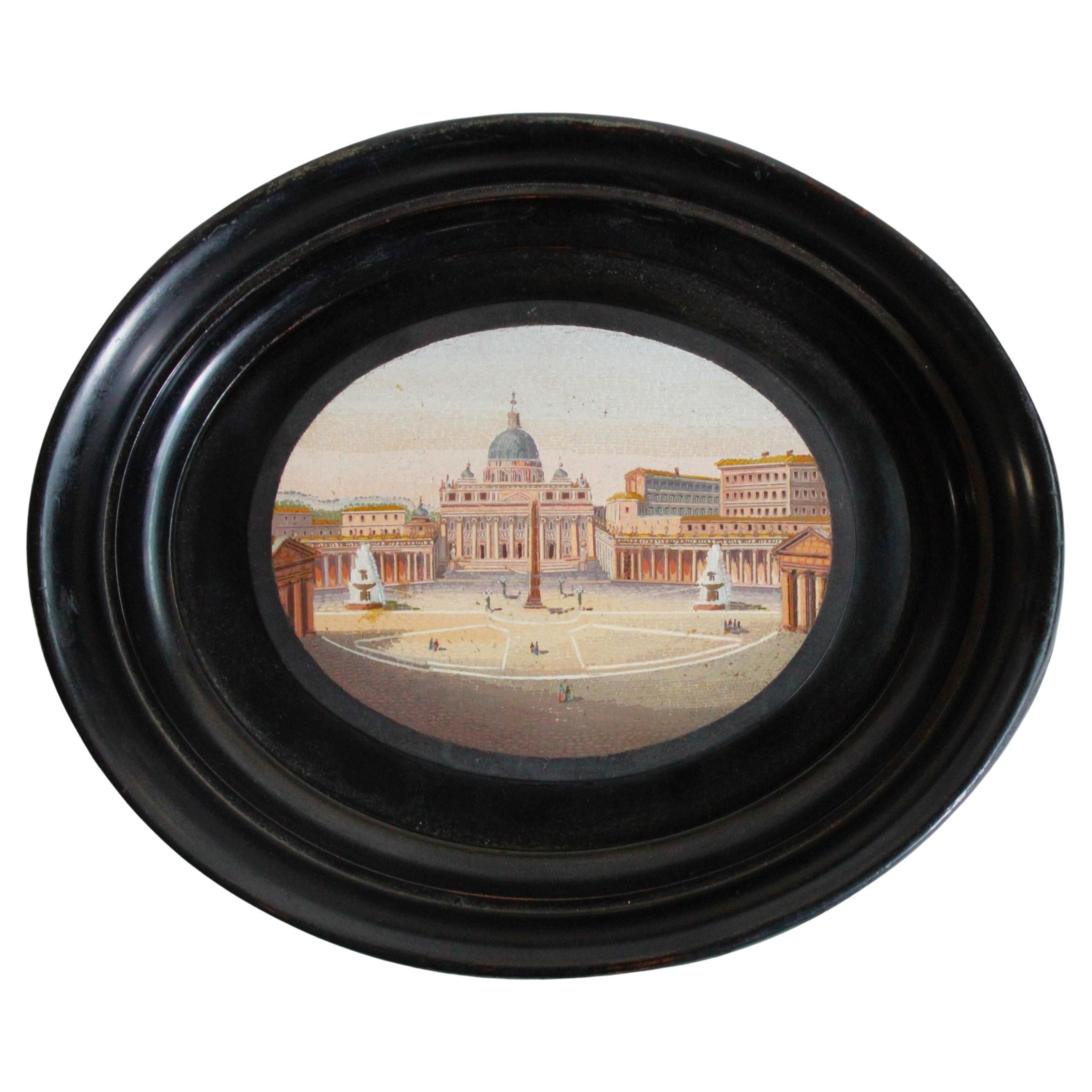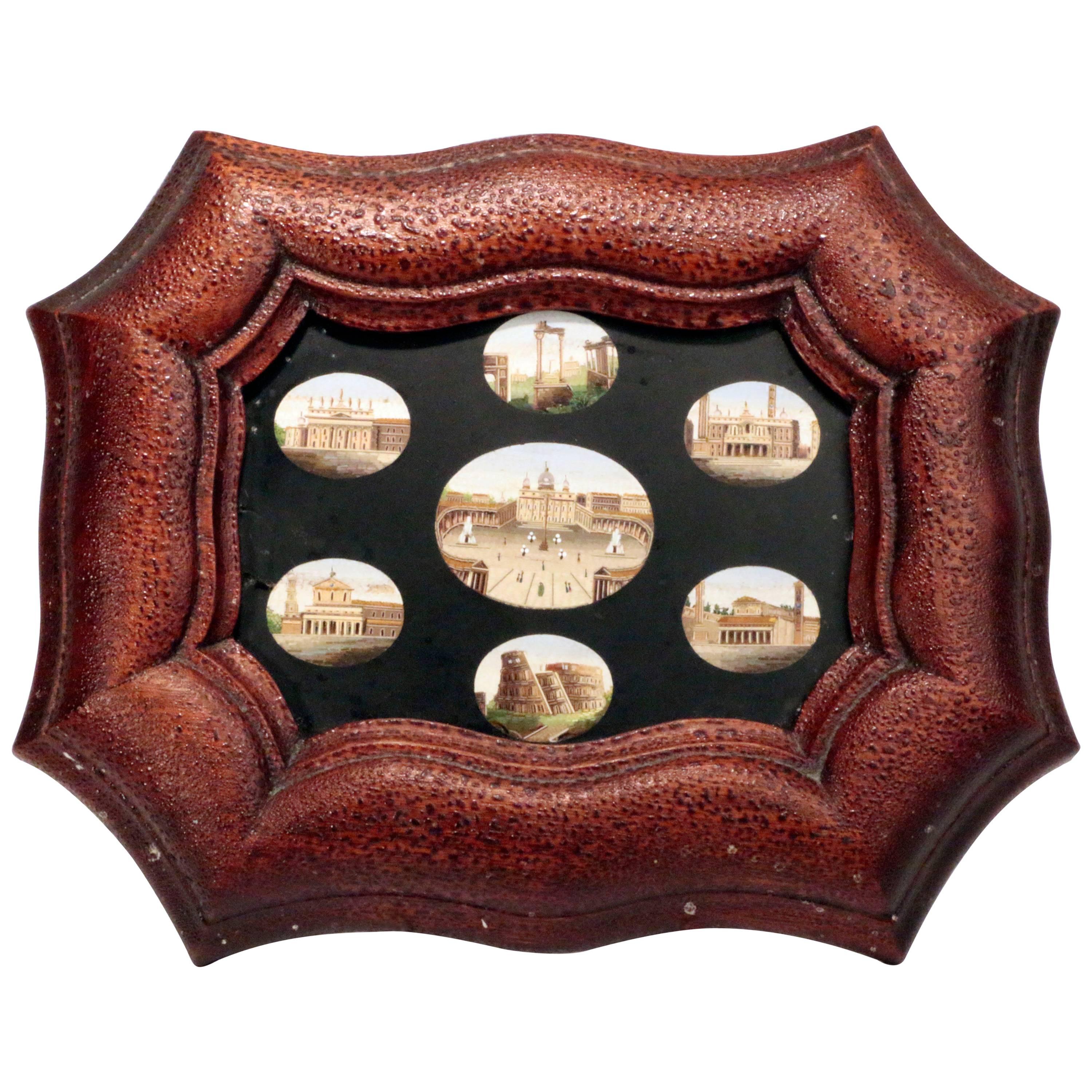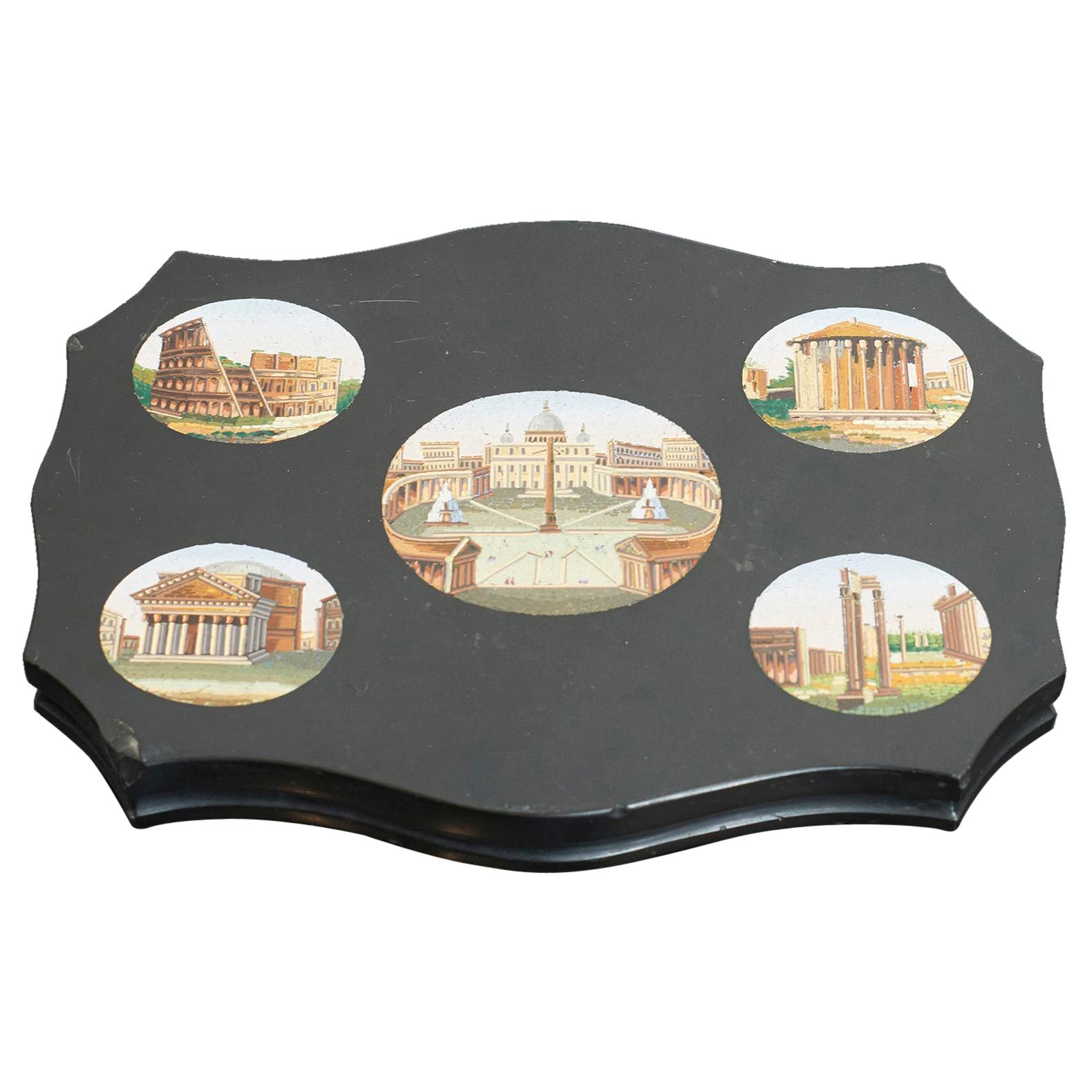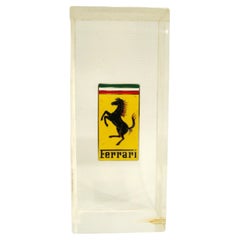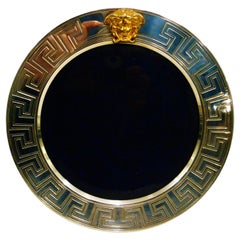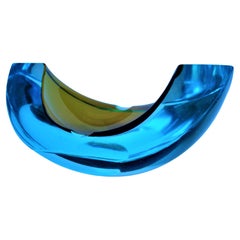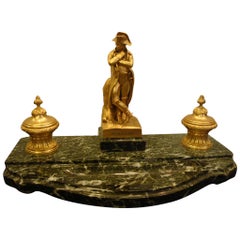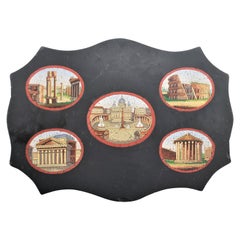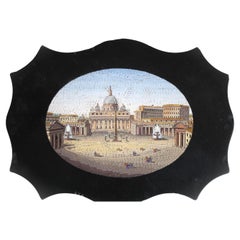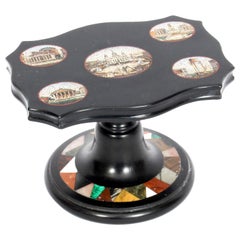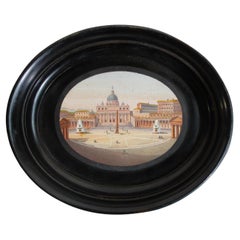Artículos similares a Pisapapeles Micro Mosaico A Grand Tour, Plaza de San Pedro Roma - Vaticano
¿Quieres más imágenes o vídeos?
Solicita imágenes o vídeos adicionales al vendedor
1 de 12
Pisapapeles Micro Mosaico A Grand Tour, Plaza de San Pedro Roma - Vaticano
1746,99 €
Acerca del artículo
"Micro Mosaic, St. Peter's Basilica in Rome, XIXth Century"
19th century oval Micro-mosaic depicting a panoramic view of the basilica and St. Peter's Square in Rome (Vatican), enclosed in a shaped slate with inset oval plaque.
Original Italian Micro Mosaic Grand Tour desk paperweight plaque.
We have specialized in the sale of Art Deco and Art Nouveau and Vintage styles since 1995. If you have any questions we are at your disposal. Pushing the button that reads 'View All From Seller'. And you can see more objects to the style for sale. Why are there so many antiques in Argentina?
In the 1880 – 1940 there was a grate wave of immigration encouraged by the periods of war that were taking place. 1st World War took place between 1914 and 1918 2nd World War took place between 1939 and 1945 The immigrants options were New York or Buenos Aires. Tickets were cheap and in Buenos Aires they were welcomed with open arms, as it was a country where everything was still to be done. Argentina was the country of new opportunities, labour was needed and religious freedom was assured, in many cases the of the family travel first until they were settled and then the rest of the family members join them. In the immigrant museum “Ellis Island Immigrant Building” in New York you can se the promotional posters of the boats that would take them to a new life. Between the years 1895 and 1896, Argentina had the highest DGP (gross domestic product) per capita in the world according to the Maddison Historical Statistics index, this situation arose due to the large amount of food being exported to European countries, which were at war. The Argentinean ships left the port of Buenos Aires with food, but they returned with furniture, clothes and construction elements, (it´s common to see this the old buildings of the historic neighbourhood of San Telmo, the beams with the inscription “Made in England)”, as well as many markets that were built in Buenos Aires, such us the San Telmo Market, whose structure was brought by ship and afterwards assembled in 900 Defensa Street. With the great influence of European immigrants living in the country, the children of the upper classes travelled to study in France, resulting in the inauguration of “La Maison Argentinienne”, on 27th of June 1928, in the international city of Paris, which hosted many Argentinians that were studying in Frace. It´s the fourth house to be built after France, Canada and Belgium, being the first Spanish-speaking one. Still in place today (17 Bd Jourdan, 75014, Paris, France). Many of the children of these wealthy families who attended international art exhibitions, museums and art courses abroad, took a keen interest in the European style. This is why Buenos Aires was at the time referred as “The Paris of South America”. Between the years 1890 and 1920 more than a hundred Palaces were built on Alvear Avenue the most exclusive avenue in Buenos Aires. Today some of these palaces have been transformed into museums, hotels and embassies. In the year 1936, the Kavanagh building was inaugurated, it was the tallest reinforced concrete building in South America. During 1994 the American Society of Civil Engineers distinguished it as an “international engineering milestone”, and it´s now considered a World Heritage of Modern Architecture. At the time was common to hire foreign architects such as Le Corbusier, who visited Buenos Aires/Argentina in 1929 and in 1948 he drew up the blueprints for a house built in La Plata City (which was declared a World Heritage Site). In 1947, the Hungarian architect Marcelo Breuer designed “Parador Ariston” in the seaside city of Mar del Plata. After an Argentinean student at Harvard University convinced him to come to Argentina. He worked on an urban development project in the Casa Amarilla, area of La Boca. The Ukrainian architect, Vladimiro Acosta, arrives in Argentina in 1928 and worked as an architect until que moved to Brazil. Antonio Bonet, a Spanish architect who worked with Le Corbusier in Paris, arrives in Argentina in 1937, where he carried out several architectural works and in 1938 designs the well-known BFK chair. Andres Kálnay, of Hungarian origin, made around 120 architectural masterpieces, among which the former Munich brewery stands out, he even made the furniture’s design. The German architect, Walter Gropius, director of the Bauhaus, lived in Argentina, where he wrote articles for “Sur” magazine and founded in Buenos Aires, an architectural firm with Franz Möller, who was also an architect, where he built two houses. At the same time several famous designers decided to immigrate to Argentina, among them we can find the well-known French designer, Jean-Michel Frank, who arrived in the country in 1940 and also worked for the Rockefeller family. Special pieces were made, which were sold exclusively in the country, such as the well-known German company “WMF”, who sold their products by catalogue, which were chosen by the ladies of high society in the list of wedding gifts, as well as the pieces designed by Christofle. The Swiss sculptor Alberto Giacometti, made special pieces for Argentinean mansions. In 1904 the first Jansen branch outside Paris was established in Buenos Aires, as the Argentinean clientele demanded a large amount of furniture, from the end of the 19th century to the mid-20th century. In 1970, the brand Rigolleau Argentina made pieces authorised by Lalique. The brands Maple and Thompson also set up shop in the country. The French plastic artist, Marcel Duchamp moved to Argentina in 1918-1919. Glass signed Gallé, Charder, Leverre, Schneider, Muller and other French firms. They were bought in flower shops and were given to ladies with beautiful floral arrangements. Some furniture manufacturers travelled to international fairs and bough the patterns to produce the furniture in Argentina, such as the furniture firm Englander and Bonta, who bought the patterns in Italy. It is worth mentioning that in Argentina we have the largest community of Italians outside of Italy, as it is estimated that 70 percent of the inhabitants have at least one Italian descendant, followed by Spanish immigrants. The most Important furniture stores in Argentina: Comte is founded in 1934 (under the direct management of Jean Michel Frank in 1940). Nordiska (Swedish company established in 1934). Churba in 1960, a company that brought foreign designers to present their furniture in the country: Denmark: (Arne Jacobsen, Finn Juhl, Bender Madsen, Ejner Larsen, Poul Kjaerholm, Hans Wegner) Sweden: (Hans Agne Jakobsson, Gustavsberg) United States: (Herman Miller) Finland: (Lisa Johansson, Folke Arstrom, Tapio Wirkkala, Alvar Aalto, Timo Sarpaneva) Swedish Factory: (Orrefors) Italy: (Littala, Vico Magistretti, Emma Gismondi, Gae Aulenti, Angelo Mangiarotti, Elio Martinelli, Gianna Celada, Angelo Mangiarotti, Mario Bellini, Carlo Scarpa) Finland: (Olivia Toikka) Plata Lappas (Lappas Silver): a goldsmith shop founded in 1887 in Argentina by Alcibiades Lappas of Greek origin. In 2019, in Argentina took place “the Art Deco world congress” . Argentina currently has more than 100 Art Deco buildings and another 90 Art Nouveau buildings throughout the city of Buenos Aires. Argentina is a country that has not been involved in many wars, which is why it has been a refuge for works of art and antiques from different periods of time, unlike European countries. That is way many collectors, museums and antique dealers from all over the world visit it, you should not miss the opportunity to visit this great country.
- Dimensiones:Altura: 17 cm (6,7 in)Anchura: 25,5 cm (10,04 in)Profundidad: 1,8 cm (0,71 in)
- Estilo:Grand Tour (Del período)
- Materiales y técnicas:Mármol,Mosaico
- Lugar de origen:
- Época:
- Fecha de fabricación:1870
- Estado:Desgaste acorde con la edad y el uso.
- Ubicación del vendedor:Buenos Aires, AR
- Número de referencia:1stDibs: LU2027344889902
Sobre el vendedor
4,9
Vendedor profesional aprobado
Todos los vendedores superan estrictas normas de autenticidad y confiabilidad
Establecido en 2002
Vendedor de 1stDibs desde 2016
322 ventas en 1stDibs
Tiempo de respuesta usual: 1 hora
- EnvíoRecuperando presupuesto…Envío desde: Buenos Aires, Argentina
- Política de devolución
Partes de esta página se han traducido automáticamente. 1stDibs no puede garantizar la exactitud de las traducciones. El inglés es el idioma predeterminado de este sitio web.
Garantía de autenticidad
En el improbable caso de que haya algún problema con la autenticidad de un artículo, ponte en contacto con nosotros en un plazo de 1 año para recibir un reembolso total. DetallesGarantía de devolución de dinero
Si tu artículo no es como se describe, sufre daños durante el transporte o no llega, ponte en contacto con nosotros en un plazo de 7 días para recibir un reembolso total. DetallesCancelación dentro de las 24 horas
Tienes un período de gracia de 24 horas para reconsiderar tu compra, sin preguntas.Vendedores profesionales aprobados
Nuestros vendedores de primera clase deben cumplir estrictos estándares de servicio para mantener la integridad de nuestros anuncios.Garantía de igualación de precios
Si encuentras que un vendedor publicó el mismo artículo por un precio menor en otro lado, igualaremos ese precio.Entrega global de confianza
Nuestra red de transporte de primera ofrece opciones de envío especializado en todo el mundo, que incluye envío personalizado.Más de este vendedor
Ver todoPisapapeles de escritorio Vintage Ferrari Cars Badge / Emblem Lucite. Italia Años 70
Pisapapeles de escritorio Vintage Ferrari Badge / Emblem Lucite. Italia, años 70.
Pisapapeles publicitario Ferrari muy bonito.
Estamos especializados en la venta de Art Decó y Art ...
Categoría
finales del siglo XX, Italiano, Moderno de mediados de siglo, Pisapapeles
Materiales
Lucite
Gianni Versace Fotografía / Foto / Marco redondo de plata de ley Años 90
Por Gianni Versace
Marco redondo icónico Gianni Versace de plata de ley para fotografía/foto/imagen, con borde grabado de llave griega y máscara de Medusa Versace de metal dorado en la parte superior, ...
Categoría
Década de 1990, Italiano, Renacimiento griego, Marcos de fotos
Materiales
Plata esterlina
1747 € Precio de venta
Descuento del 25 %
Cenicero grande de cristal de Murano Sommerso italiano, Italia Años 60
Por Cenedese
Cenicero grande de cristal de Murano Sommerso cenedés italiano. Italia Años 60
Utilizando la técnica del Sommerso, esta pieza de vidrio grande y pesada presenta un diseño inusual.
Pa...
Categoría
mediados del siglo XX, Italiano, Moderno de mediados de siglo, Accesorio...
Materiales
Cristal de Murano
Tintero de escritorio escultura Napoleón de bronce, firmado Emile Pinedo
Por Émile Pinedo
Tintero de escritorio de bronce Napoleón Bonaparte, firmado Pinedo con marca de fundición. Montado sobre un mármol de los Alpes Verdes.
Antiguo pozo de tinta Napoleón firmado en e...
Categoría
Antiguo, Década de 1890, Francés, Imperio, Tinteros
Materiales
Bronce
Barovier Toso Jarrón / Cuenco de Murano Rostrato Italian Art Glass Vintage, circa 1938
Por Ferro Toso Barovier, Ercole Barovier
Barovier Toso Jarrón / cuenco Rostrato Murano italiano vintage de cristal artístico, hacia 1938
Exquisito centro de mesa de mediados del siglo XX, de Barovier & Toso, en vidrio sopl...
Categoría
mediados del siglo XX, Italiano, Moderno de mediados de siglo, Vidrio
Materiales
Cristal de Murano
1538 € Precio de venta
Descuento del 20 %
Art Nouveau - Art & Craft Marco de fotografía de plata de ley esmaltado, Cymric 1903
Por William Hair Haseler, Archibald Knox, Liberty & Co.
Art Nouveau - Marco para fotografía Art & craft de plata esterlina esmaltada - William Hutton & Sons 1903.
Marco de fotos cuadrado de plata y esmalte de William Hutton & Sons, diseño...
Categoría
principios del siglo XX, Británico, Artes y manualidades, Plata esterlina
Materiales
Plata esterlina, Esmalte
También te puede gustar
Antiguo pisapapeles de micromosaico Grand Tour con viñetas vaticanas
Este antiguo pisapapeles de micromosaico de Grant Tour no está firmado, pero se supone que procede de Italia, o posiblemente de la Ciudad del Vaticano, y data aproximadamente de 1880...
Categoría
Antiguo, Fines del siglo XIX, Italiano, Victoriano, Pisapapeles
Materiales
Pizarra
pisapapeles micromosaico Plaza de San Pedro
Pisapapeles de micromosaico que representa la Plaza de San Pedro. SE PUEDEN SOLICITAR FOTOS ADICIONALES, INFORMACIÓN DEL LOTE E INFORMACIÓN DE ENVÍO ENVIANDO UN CORREO ELECTRÓNICO
E...
Categoría
mediados del siglo XX, Italiano, Marcos de fotos
Materiales
Piedra preciosa
Antiguo Gran Tour Italiano Vaticano Micro-Mosaico Mármol Escritorio Peso Siglo XIX
Se trata de una impresionante pesa decorativa antigua de escritorio de mármol negro con incrustaciones de micromosaico del Gran Vaticano italiano, en forma de mesa en miniatura, fech...
Categoría
Antiguo, Década de 1870, Italiano, Pisapapeles
Materiales
Ágata, Malaquita, Ónix, Granito, Mármol, Pórfido
Micromosaico Plaza de San Pedro
Mosaico micromicro de alta calidad, que representa la Plaza de San Pedro. SE PUEDEN SOLICITAR FOTOS ADICIONALES, INFORMACIÓN DEL LOTE E INFORMACIÓN DE ENVÍO ENVIANDO UN CORREO ELECTR...
Categoría
mediados del siglo XX, Italiano, Marcos de fotos
Materiales
Piedra preciosa
Micro-Mosaico Antiguo de Gran Calidad Recuerdo de una Visita a Roma
Superb quality antique micro-mosaic Grand Tour Souvenir of a visit to Rome. set with seven panels, vignettes of Roman views in a shaped slate tablet. and in original frame. Parte de ...
Categoría
Antiguo, siglo XIX, Italiano, Grand Tour, Arte decorativo
Materiales
Mármol, Pizarra
Tabla de micromosaico del Grand Tour del siglo XIX con vistas romanas
Tabla de micromosaico del siglo XIX con cinco paneles ovalados con vistas romanas, aprox. 1860-1880.
Teselas muy finas y pequeñas briquetas de piedras semipreciosas incrustadas sobr...
Categoría
Antiguo, siglo XIX, Italiano, Grand Tour, Esculturas de pared
Materiales
Piedra, Mármol
